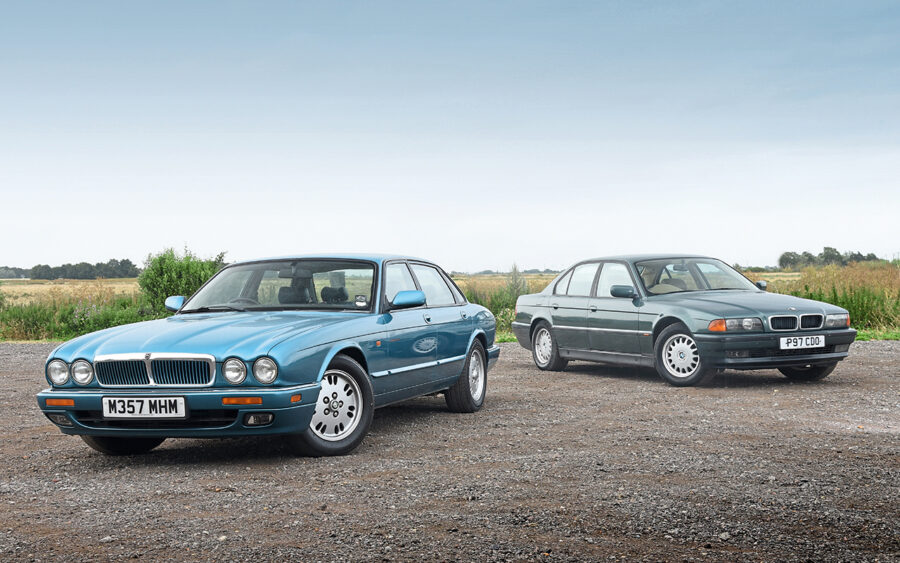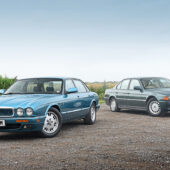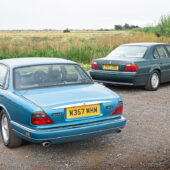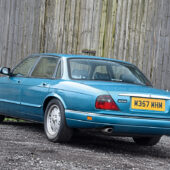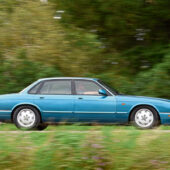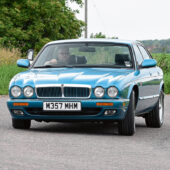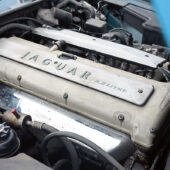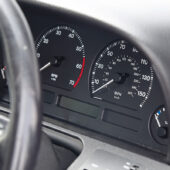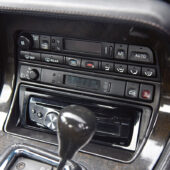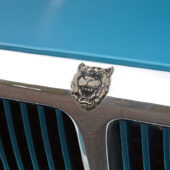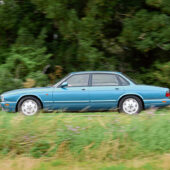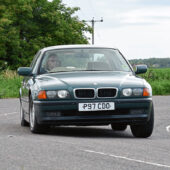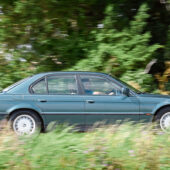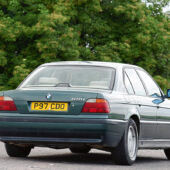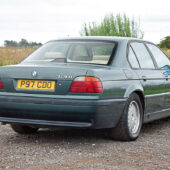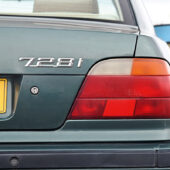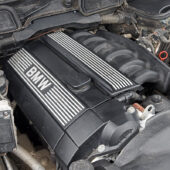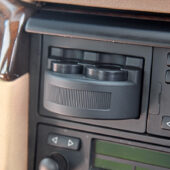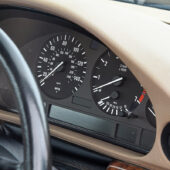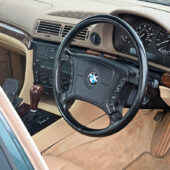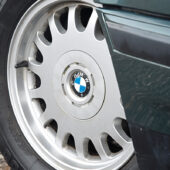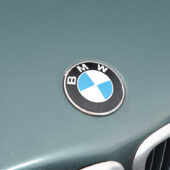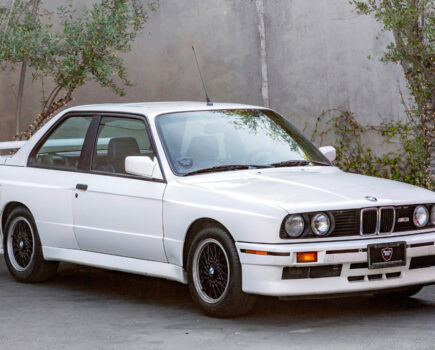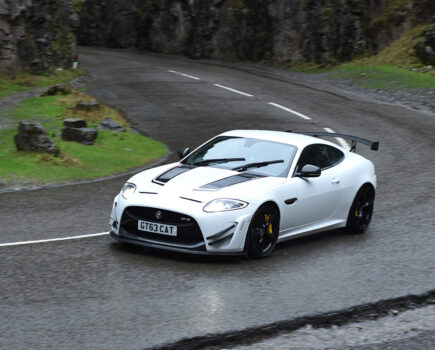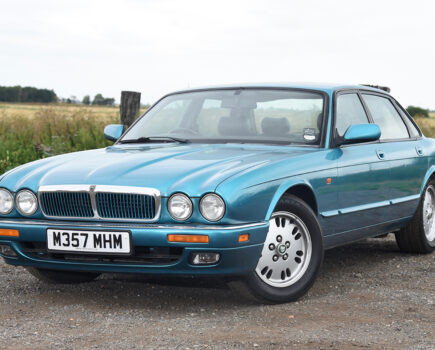The X300 Jaguar XJ and E38 BMW 7 Series each arrived in late 1994, taking different approaches to the executive saloon recipe
Words: Craig Cheetham Images: Paul Walton
When Jaguar pulled the wraps off its new XJ6 at the 1994 British Motor Show, the newcomer received a rapturous response.
The replacement for the XJ40 was the first new Jaguar to be launched under Ford’s ownership and was rushed into production ahead of the company’s more ambitious projects, such as the XK8 and S-Type, in order to show the world that Ford had plans for the luxury brand.
As a result of its short gestation, the new X300 made use of a lot of XJ40 parts. The main bodyshell, glass, doors and dashboard were the same, but the new XJ was a lot more than just a facelift.
For starters, it wasn’t shy in looking backwards. While the XJ40 was all square-edged and 80s in its appearance, the new X300 brought back some more traditional Jaguar styling cues, including quad headlamps, a fluted bonnet and delicate triangular rear lamps. It was not only unmistakably a Jaguar but also unmistakably an XJ, despite some modern technology under the bonnet in the form of the company’s new AJ16 engine.
It was a terrific car to look at and an even more rewarding one to drive, while at the same time achieving a happy medium that Jaguar had failed to meet previously; despite its retro looks the new-look XJ was actively marketed (and quite successfully) towards younger drivers, with the fleet-oriented Sport model sharing the styling and sports suspension of the range-topping supercharged XJR to make it appeal to thrusting younger execs who may otherwise have plumped for one of the German brands.
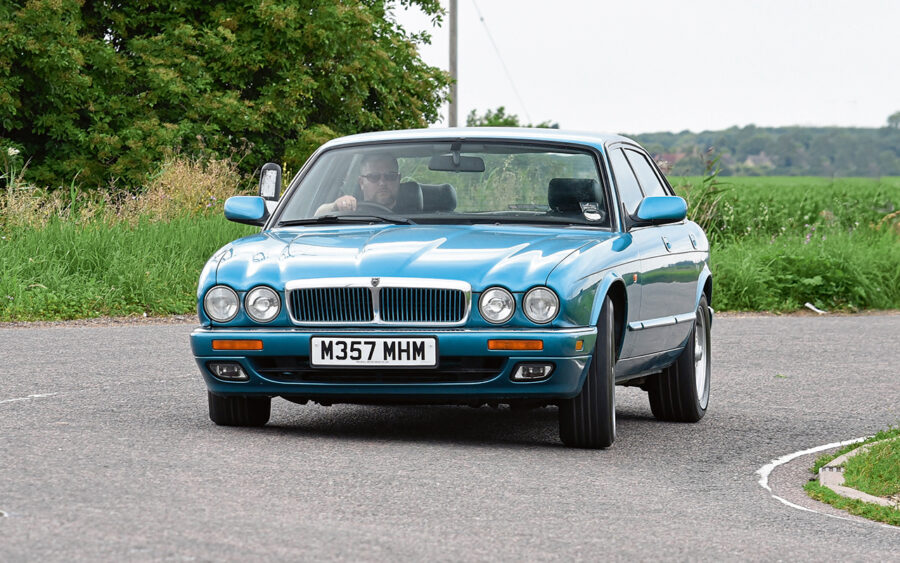
Despite their awareness of its XJ40 roots, critics were still favourable of the new car and its refinement. “Driving the XJ6 is an essentially sensual pleasure,” wrote the great Russell Bulgin in the November 1994 issue of Car magazine. “There’s a silken quality to the damping, a poise to the new ZF Servotronic power steering and a malleability at either end of the suspension travel that ensure that crenulated surfaces turn into crème caramel.”
But BMW had an ace up its sleeve – and what an ace it was. The E38-generation BMW 7 Series is, to this day, regarded as a high watermark for BMW. It was a car that was not only clinically styled and beautifully executed, but also technologically advanced. It was the first car in the world to get curtain airbags and the first BMW to come with integrated satellite navigation and digital radio for starters – all of which are standard in most mainstream models a quarter of a century on. It was also driven on screen by James Bond, which always helps add a dash of cool.
“The brave new world of luxury sedans is typified by more space-efficient shapes, higher-technology equipment, and considerably less flashy ornamentation,” announced the American Motor Trend magazine in March 1995. “With BMW’s improved aero bodywork, more-rigid structure, larger living area, and sport-sedan driving dynamic, the outstanding new 7 Series is at the forefront of this movement.”
Both cars were offered in straight-six or V12 flavour during their lives, but Jaguar had to wait until the V8-engined X308 came along in 1997 in order to take on the V8s that fed the mid-point of the BMW line-up range.
The volume E38, though, was the entry-level 728i, which came with a 2.8-litre 24v straight-six. It was £2,000 more expensive than the £34,495 Jaguar, despite being 13bhp behind it on power output. But, in terms of spec, the BMW left little behind – to equip an XJ6 3.2 Sport up to the same level as the BMW, with leather trim and a six-CD stereo, you’d be looking at an almost identical price.
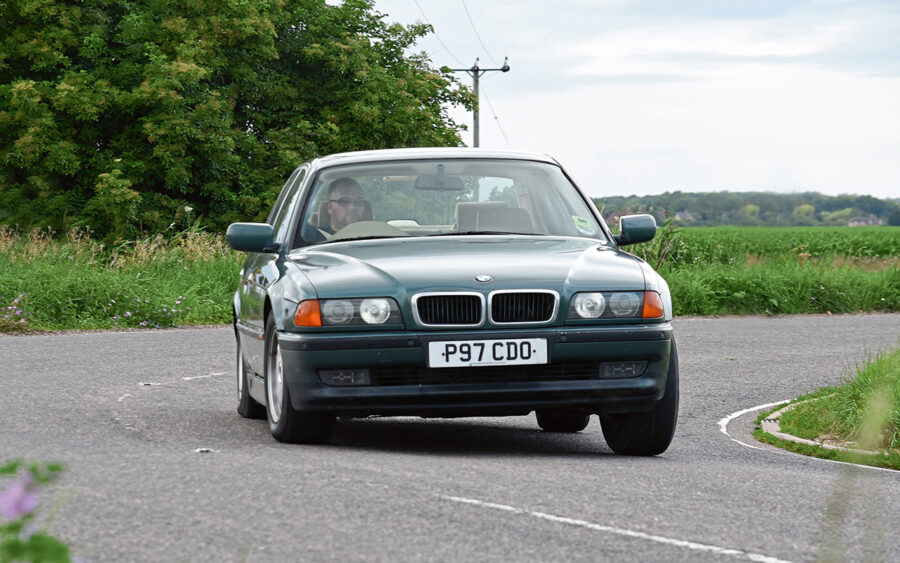
The same applies today, too. Both of these cars have similar values, whether you’re shopping at the cheaper end of the spectrum or looking for the absolute best. Or, in the case of the two we have here, are looking for something somewhere in the middle.
The E38 is a fabulous-looking car that still appears contemporary today. Indeed, in the eyes of the brand’s purists, no Seven since has looked as good. From its distinctive front end – which replaced BMW’s traditional quad-light appearance with new rectangular lamps, but retained the iconic kidney grille – to its kicked-up rear end, angular flanks and trademark Hoffmeister kink on the C-pillar, the E38 is beautifully proportioned. Plain, but no less handsome for it. When the controversial flame-sided E65 7 Series appeared in 2001, BMW traditionalists were up in arms.
The X300 is a lot fussier, but not in a bad way. It was the first led by Jaguar’s then design director, the late Geoff Lawson, to come to fruition and the first demonstration of Lawson’s interpretation of the New Retro design theme that was running through all of Ford’s brands at the time. It would ultimately lead to the even more retro S-Type, along with the micro-XJ looks of the X-Type and the all-new X350 XJ, which continued the theme, though tragically Lawson never got to see the latter two in the metal as he died from a stroke in 1999.
It wasn’t quite the free design that Lawson would have liked it to be because the X300 needed to retain the XJ40’s doors and mid-section, complete with low roof and high sills – a rather antiquarian look when compared to the bluff-sided and bold BMW. But the proportions were (and remain) almost perfect. The detailing was lovely, too – delicate chrome not done to excess, discreet badges and a purposeful grille.
There’s a reason why the X300 and subsequent X308 are becoming increasingly popular as classic cars and it has a lot to do with the fact that today, as they have done for the past 25 years, they still look achingly pretty.

And that makes choosing between these cars extremely difficult – the X300 is by far and away the most distinctive and characterful, but the E38 is the cleaner design, unimpeded by excess. If you want to get noticed then the Jaguar is the one to go for, but part of the 728i’s appeal is that it slips beneath the radar.
Considering the Jaguar’s interior was a carry-over from the XJ40, the majority of its switchgear is simple and intuitive to use, but additions that came as part of the X300 refresh – such as the digital air-con controls, door-unlock button and cruise control switches – appear to have been added as the interior designers went along.
The E38, by contrast, is very well thought-out. The cabin is much more spacious, the plush seats are bigger and more inviting, the rear legroom is multiple times better and the luggage space far more commodious. It feels like a car from a different era, which in many respects it is.
But, while the BMW is by far the more practical and best thought-out of the two, the Jaguar trumps it for its driving position. You sit low, legs outstretched, behind a dash that may feel like an anachronism, but only in the way that you might choose an antique desk to suit the style of your home. It’s extremely comfortable – and that’s before you’ve even considered the ride quality.
With entry-level powertrains, neither of these cars are overtly quick, but neither are they slouches. The Jaguar has 208bhp compared to the BMW’s 197bhp, while torque figures are similarly distanced (206lb ft and 222lb ft, respectively) – but, in reality, the difference between performance is negligible. With automatic transmission, the Jaguar accelerates from 0-60mph in 8.7 seconds, while the BMW takes 8.6. The BMW’s top speed is 141mph, the Jaguar’s 138mph. So there really is nothing to choose.
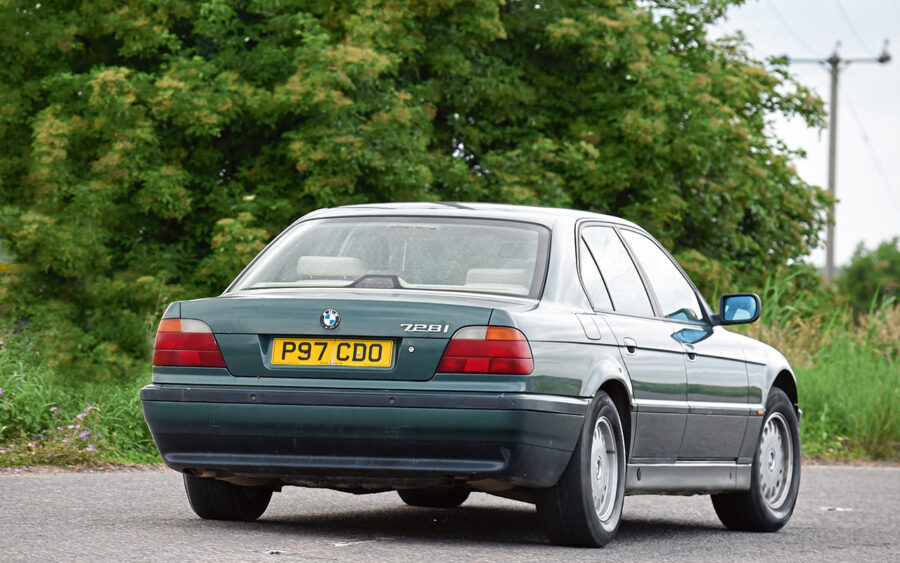
The difference is in the way they deliver it. Both have 24v straight-sixes, but the Jaguar AJ16 unit feels more eager. It delivers its power in a more muscle-car manner, the rear end of the car dipping down as it lifts up its skirt. The BMW feels more stable and somehow more mature. It accelerates smoothly and never feels lacking in power, but it doesn’t have the Jaguar’s sense of occasion.
Both of these cars are wonderful long-distance cruisers, though. The E38, with its wide electrically-adjustable seats and more open-plan cabin, is the airiest and more convivial for passengers, but the Jaguar is every bit the better driver’s car.
That applies away from the motorway, too. For starters, the Jaguar has an immeasurably better ride – something that has always been an XJ hallmark. Whether it’s a bumpy country lane or broken tarmac, the Jaguar has an absolutely wonderful ride quality that adds to its claim as the most comfortable car in this pairing.
Yet show it a twisty road and the Jaguar really shines. It could be down to the Sport sharing its suspension set-up with the XJR, but the Jaguar manages to handle like a much smaller, lighter car. It’s impossible to not enjoy hustling it along.
By contrast, the E38 feels every bit the big car that it is. It has that fantastic BMW feel as you turn into and accelerate out of a bend, for which the Bavarian brand is highly regarded, but it also feels heavy and a bit more of a handful. By that, we don’t mean it’s bad – far, far from it. It’s a fine-handling and very likeable car, but the Jaguar is a vehicle that was designed from the ground-up around its driver, and it shows.
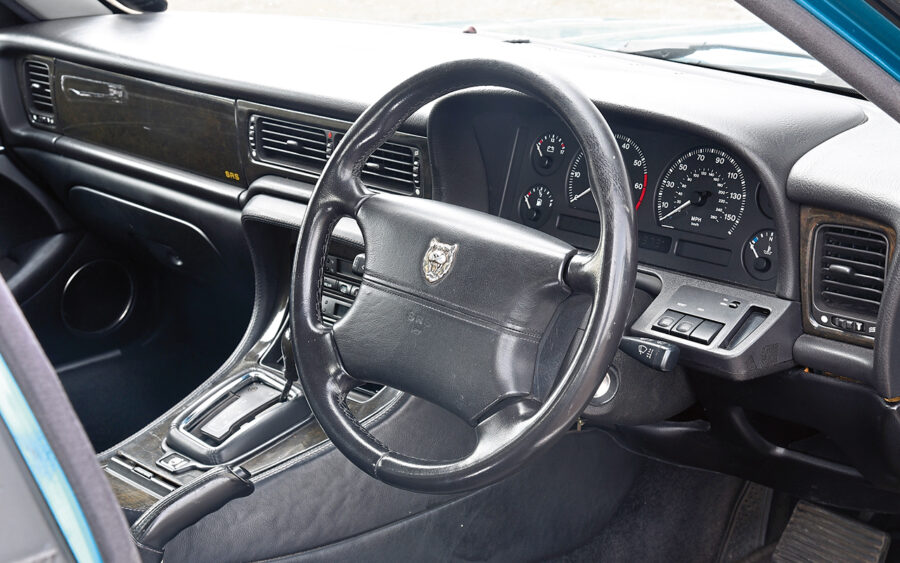
Like so many cars from the 90s in the current market, prices are all over the place, from a few hundred quid for the rough examples to five figures for the very best. Specification is important, condition even more so.
As a ballpark figure, you can get a very usable example of either for around the £2,000–3,000 mark and for that both of these cars have plenty to offer for a sensibly modest outlay. The downside is that cars in this price bracket won’t be perfect and will require regular fettling to keep them on-song. The two cars in this group test are typical of the cars in this price bracket – smart and presentable, but with a jobs list attached.
Spend upwards of £4k and you’re more likely to find a good one, but, even then, there’s a notable gulf between the best cars and the merely average. A decent service history is helpful, a thorough check of the bodywork essential.
Concours examples of either are already £7,000 upwards and are only going one way, with the best ones fetching more than that. A perfect X300 is a £15,000 car these days, the E38 slightly less.
So, which would I choose? Confession time: both of these cars are mine, so when it ultimately came to choosing between the two, I couldn’t and ended up with the pair. What more proof is there that each is beguiling for its own reasons?
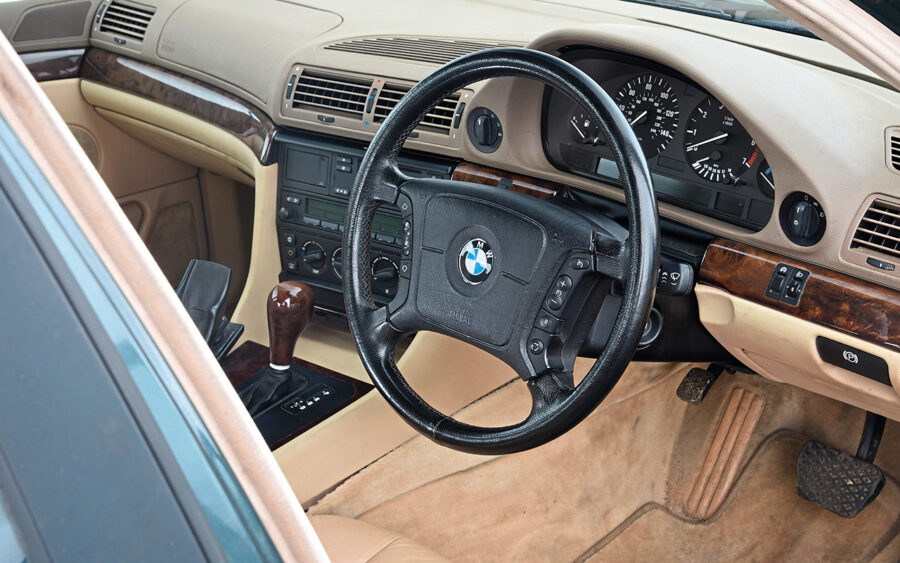
I wanted to own both of these cars as an 18-year-old when they first came out and promised myself that I would. At 43, I now do – and I got them both for less than the price of a well-used hatchback.
And therein lies the appeal of these cars. I’ve owned the Jaguar for seven years. It has rewarded me by a constant, unending list of niggling little faults, but it has never really let me down mechanically. I’d jump in it and drive it to the other side of Europe tomorrow, knowing full-well that I’d arrive refreshed and happy. It’s like your favourite pair of old shoes. You love an X300 because it is wonderfully comfortable – and it fits. The more you own it, the more you grow to trust it, too.
The E38, by contrast, is a far more complex car. I love its simple styling, its intelligent cabin layout and its all-round feeling of solidity, yet I know that in real terms the Jaguar will probably be the more reliable and simpler car to own. I say this as a died-in-the-wool Jaguar lover, but in 1994 the 728i was probably the better car, if not one of the best cars in the world.
It was great, and didn’t need to apologise for a thing, whereas the Jaguar was compromised by its aged architecture and below par packaging. Today, I’d take the Jaguar every time.

